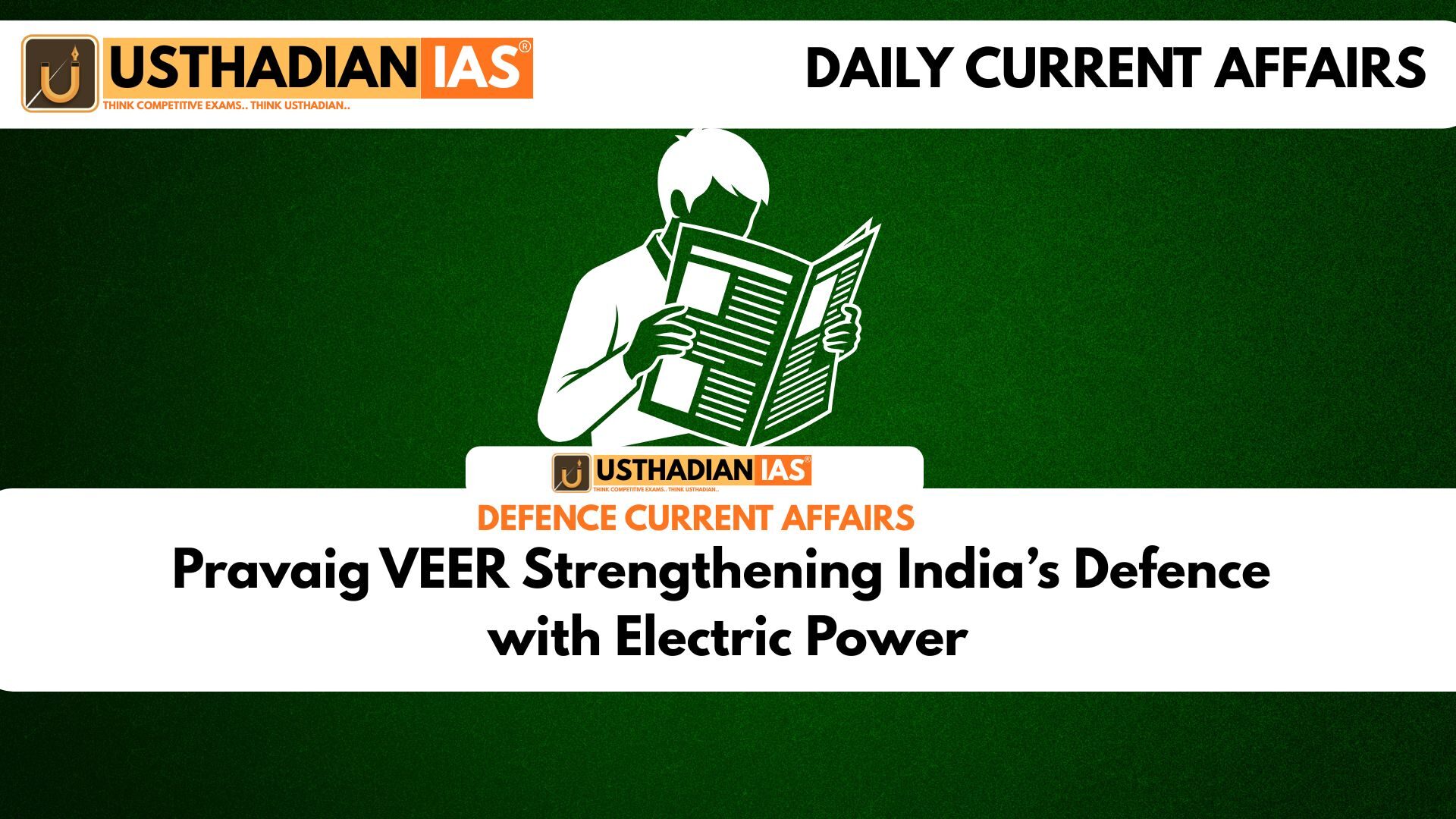India’s Leap Toward Self-Reliant Defence
Pravaig VEER Strengthening India’s Defence with Electric Power: India has achieved a major milestone in indigenous defence innovation with the launch of Pravaig VEER, the nation’s first electric vehicle designed exclusively for military operations. Developed by Pravaig Dynamics, a Bengaluru-based startup, this EV marks a breakthrough under the Atmanirbhar Bharat initiative by showcasing India’s growing ability to produce advanced, sustainable, and self-reliant defence technology.
Static GK fact: Pravaig Dynamics was founded in 2011 and is known for producing India’s luxury electric sedan, the Pravaig Defy, before venturing into defence-grade EVs.
Stealth and Power in Motion
The VEER EV is a cutting-edge military vehicle engineered for stealth operations, with extremely low noise and minimal heat signatures. This allows the vehicle to move undetected during critical missions. Built to operate across deserts, forests, and high-altitude terrains, it ensures high terrain adaptability and quick repair readiness, enhancing field efficiency for soldiers during combat or reconnaissance missions.
Static GK Tip: India’s Armed Forces operate in diverse terrains ranging from the Thar Desert to the Siachen Glacier, making adaptable mobility a strategic necessity.
Recognition for Indigenous Innovation
The Pravaig VEER EV was awarded the prestigious iDEX (Innovation for Defence Excellence) recognition, a government initiative that promotes indigenous solutions for military applications. The vehicle’s successful military trials have already proven its readiness for real-world deployment, marking a defining step in India’s path to defence self-reliance.
Static GK fact: The iDEX framework was launched in 2018 by the Ministry of Defence to support startups and MSMEs in creating defence-grade technologies.
Benefits Beyond the Battlefield
The VEER’s electric propulsion system not only enhances tactical capabilities but also reduces operational costs. With no reliance on conventional fuel, it cuts the need for extended fuel supply chains — a critical advantage during long missions. This development aligns with India’s broader green mobility vision, reducing the defence sector’s carbon footprint while improving strategic efficiency.
Additionally, the project encourages public-private collaboration, with startups contributing to the military technology ecosystem alongside established defence manufacturers.
Strengthening India’s Defence Ecosystem
The successful introduction of VEER is a sign of India’s evolving defence-industrial base. If mass production scales efficiently, the VEER could serve not only India’s military but also potential export markets among friendly nations. This strengthens India’s position in the global defence mobility landscape, signaling its shift from an importer to an innovation-driven defence exporter.
Static GK fact: India’s defence export target for 2025 is set at ₹35,000 crore, with electric and autonomous systems being key growth areas.
Future Outlook
Following successful trials, Pravaig Dynamics plans to begin full-scale production, focusing on optimization, certification, and integration into India’s military logistics network. While challenges such as supply chain scaling and mass production remain, the VEER’s success story showcases how Indian innovation is shaping the next generation of sustainable and tactical military vehicles.
Static Usthadian Current Affairs Table
Pravaig VEER Strengthening India’s Defence with Electric Power:
| Topic | Detail |
| Manufacturer | Pravaig Dynamics, Bengaluru |
| Vehicle Name | VEER (Electric Military Vehicle) |
| Launch Year | 2025 |
| Award | iDEX (Innovation for Defence Excellence) |
| Purpose | Designed for stealth and high mobility defence operations |
| Initiative | Atmanirbhar Bharat, Make in India |
| Key Feature | Low noise, low heat signature, all-terrain adaptability |
| Propulsion | 100% electric drivetrain |
| Defence Trials | Successfully completed military field trials |
| Future Plan | Mass production and military integration within 12–24 months |








